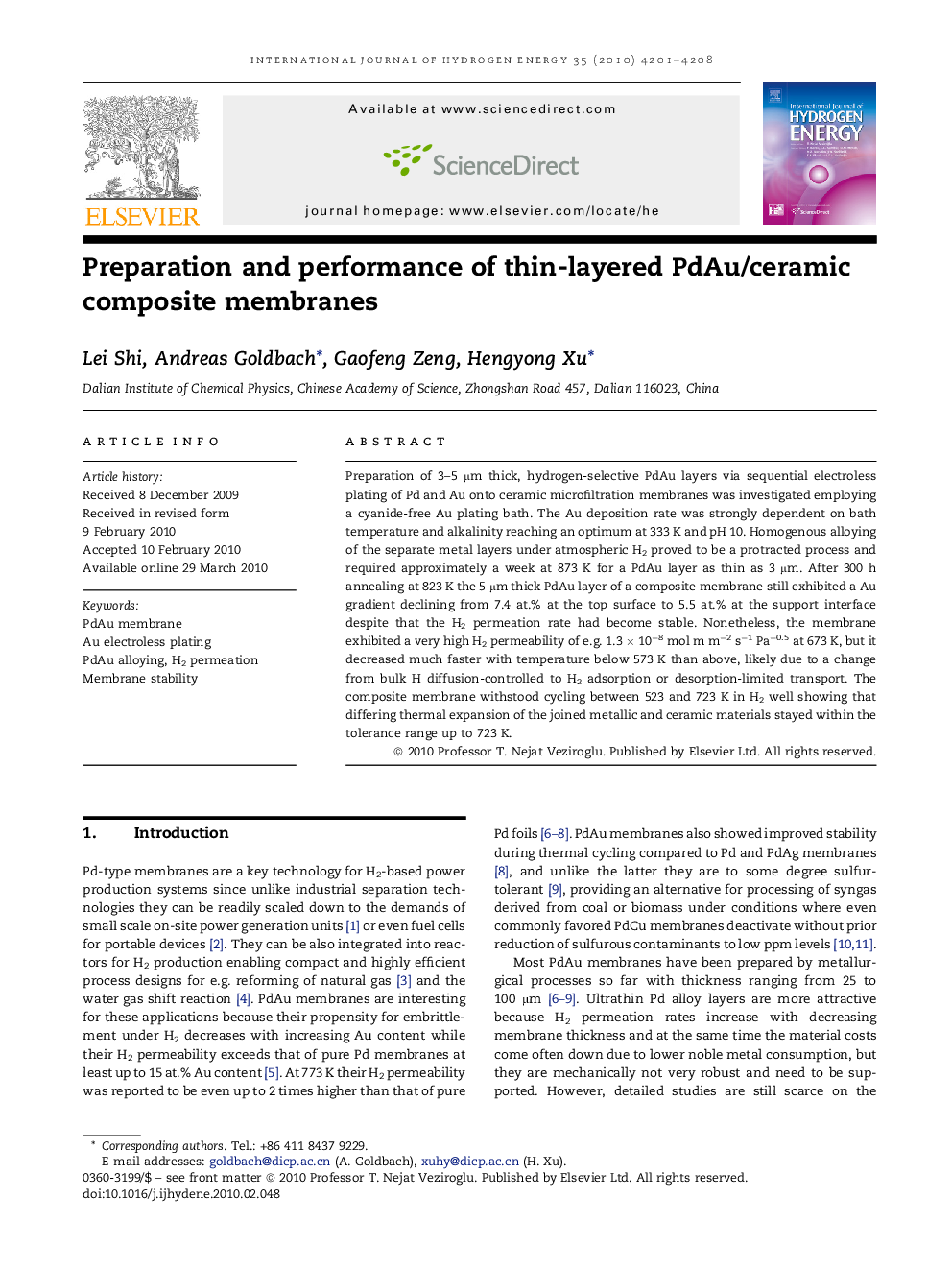| Article ID | Journal | Published Year | Pages | File Type |
|---|---|---|---|---|
| 1273117 | International Journal of Hydrogen Energy | 2010 | 8 Pages |
Preparation of 3–5 μm thick, hydrogen-selective PdAu layers via sequential electroless plating of Pd and Au onto ceramic microfiltration membranes was investigated employing a cyanide-free Au plating bath. The Au deposition rate was strongly dependent on bath temperature and alkalinity reaching an optimum at 333 K and pH 10. Homogenous alloying of the separate metal layers under atmospheric H2 proved to be a protracted process and required approximately a week at 873 K for a PdAu layer as thin as 3 μm. After 300 h annealing at 823 K the 5 μm thick PdAu layer of a composite membrane still exhibited a Au gradient declining from 7.4 at.% at the top surface to 5.5 at.% at the support interface despite that the H2 permeation rate had become stable. Nonetheless, the membrane exhibited a very high H2 permeability of e.g. 1.3 × 10−8 mol m m−2 s−1 Pa−0.5 at 673 K, but it decreased much faster with temperature below 573 K than above, likely due to a change from bulk H diffusion-controlled to H2 adsorption or desorption-limited transport. The composite membrane withstood cycling between 523 and 723 K in H2 well showing that differing thermal expansion of the joined metallic and ceramic materials stayed within the tolerance range up to 723 K.
